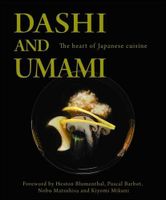Advertisement
Soaking Time
Appears in
If kombu is left to soak for a long period of time in water, the glutamate which gives the most umami emerges into the dashi in large quantities. However, many other unwanted substances also seep out to the detriment of the dashi’s flavour, such as various polysaccharides and the alginic acid responsible for kombu’s characteristic glutinous texture. Minerals also seep out and form scum on the surface of the dashi. The dashi’s colour can be affected too; although the majority of the pigment of kombu consists in beta carotene and chlorophyll, it also contains water-soluble pigmented proteins which can give unwanted colour to dishes. Furthermore, the aldehyde contained in seaweeds also emerges, creating an unfavourable smell.

